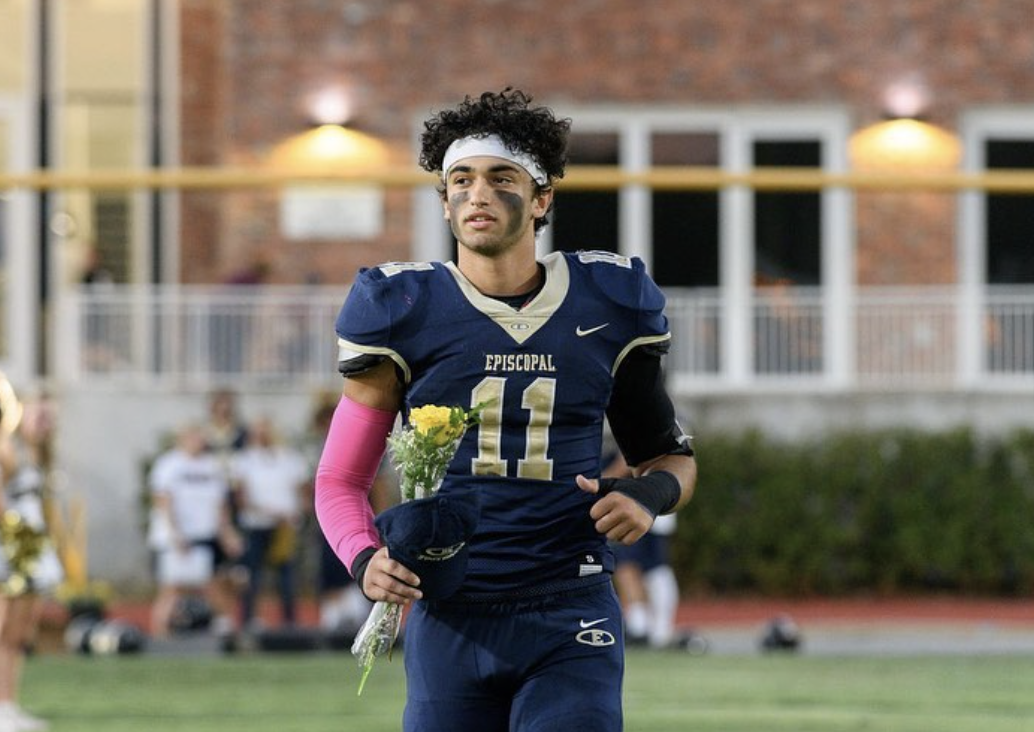CHICAGO/LONDON: The father of a Palestinian-American university student killed in the New Orleans terror attack has described how the death of his “smart, polite and athletic” son has left his family heartbroken.
Kareem Badawi, 18, from Baton Rouge, Louisiana, was celebrating New Year with his friend Parker Vidrine when a US Army veteran plowed his truck into the crowd in the city’s French Quarter, killing 15 people.
Kareem’s father Belal told Arab News that his son was in his first year at the University of Alabama studying mechanical engineering.
“He was a smart little kid, an ‘A’ student,” he said. “He was full of life. Very responsible.
“He also just loved his friends. He had a lot of friends here and at school. He enjoyed his social life, a good person always treating people with respect. He loved people and loved to build relationships and friends.”
At 6 feet 5 inches tall, Belal said that his son loved athletics and sport and excelled at sport, including football.
“It’s so awful for our family for him to be killed that way,” Belal said. “It just shocked the whole family. He was an honest, smart kid, good-looking.
“He just wanted to enjoy his life.”
Belal said that his son had traveled to New Orleans for New Year “where everybody goes like Dubai for the holiday break.”
His friend Parker, who attended the same high school as Kareem, is in a critical condition.
“We are praying for Parker and his recovery,” Belal said. “They said he is stable and we pray for him to get better.”
Belal, a Muslim, described Kareem’s killer as evil and not representative of the Muslim faith.
“Kareem did no harm to anyone,” he said. “This evil came and did what it did. I don’t think this is Islam. It is not the religion of our people. It is wrong. What kind of people would hurt or harm civilians, innocent people and others?”
The FBI said the attacker, 42-year-old Shamsud-Din Bahar Jabbar, had posted videos on social media on the morning of the attack saying he supported Daesh.

Kareem Badawi was described by his father as being very athletic and loving sport such as football. (Instagram)
Belal said that the FBI were still holding Kareem’s body and that all the family could do was pray for their son and all the other victims of the attack.
“They are not releasing anything yet so we are mourning and suffering and praying,” he said. “We pray for all the people who died and were injured including our son.
“We can’t sleep, for two days. It is very hard. It hurt us. This terrible thing has broken my heart.”
Kareem had joined the Sigma Chi fraternity at the University of Alabama.
The university’s President Stuart Bell described Badawi’s death as “heartbreaking.”
“I learned today that Kareem Badawi, one of our students at the University of Alabama, was killed in the terrorist attack in New Orleans,” Bell said in a statement. “I grieve alongside family and friends of Kareem in their heartbreaking loss.”
He urged people to take a moment to pray for those impacted by the tragedy.
Badawi graduated from the Episcopal School of Baton Rouge in May 2024 along with Parker.
The school said that it was “deeply saddened’ to learn of Badawi’s death in the attack and that Parker had been critically injured.
“It is with a profound sense of sorrow and grief that we share difficult news involving members of our Episcopal family,” the statement said. “Earlier today, we learned of a horrific attack in New Orleans that has tragically impacted our school community.”
The statement added: “Please keep the Vidrine and Badawi families in your thoughts and prayers.”
The school has scheduled an evening prayer service for the victims.
An Instagram post by the Palestinian Youth Movement described Badawi as a Palestinian-American who was a star athlete in high school, excelling in both basketball and football.
“He was beloved to all in his community in Baton Rouge,” it said.
The other victims identified in the media so far include: Nicole Perez, a 28-year old mother; Tiger Bech, 27, a Princeton University graduate; Nikyra Dedeaux, 18, an aspiring nurse from Mississippi; Reggie Hunter, 37, a father of two from Baton Rouge; Matthew Tenedorio, 25, an audiovisual technician, and Hubert Gauthreaux, 21, a graduate from the Archbishop Shaw High School in New Orleans.

























